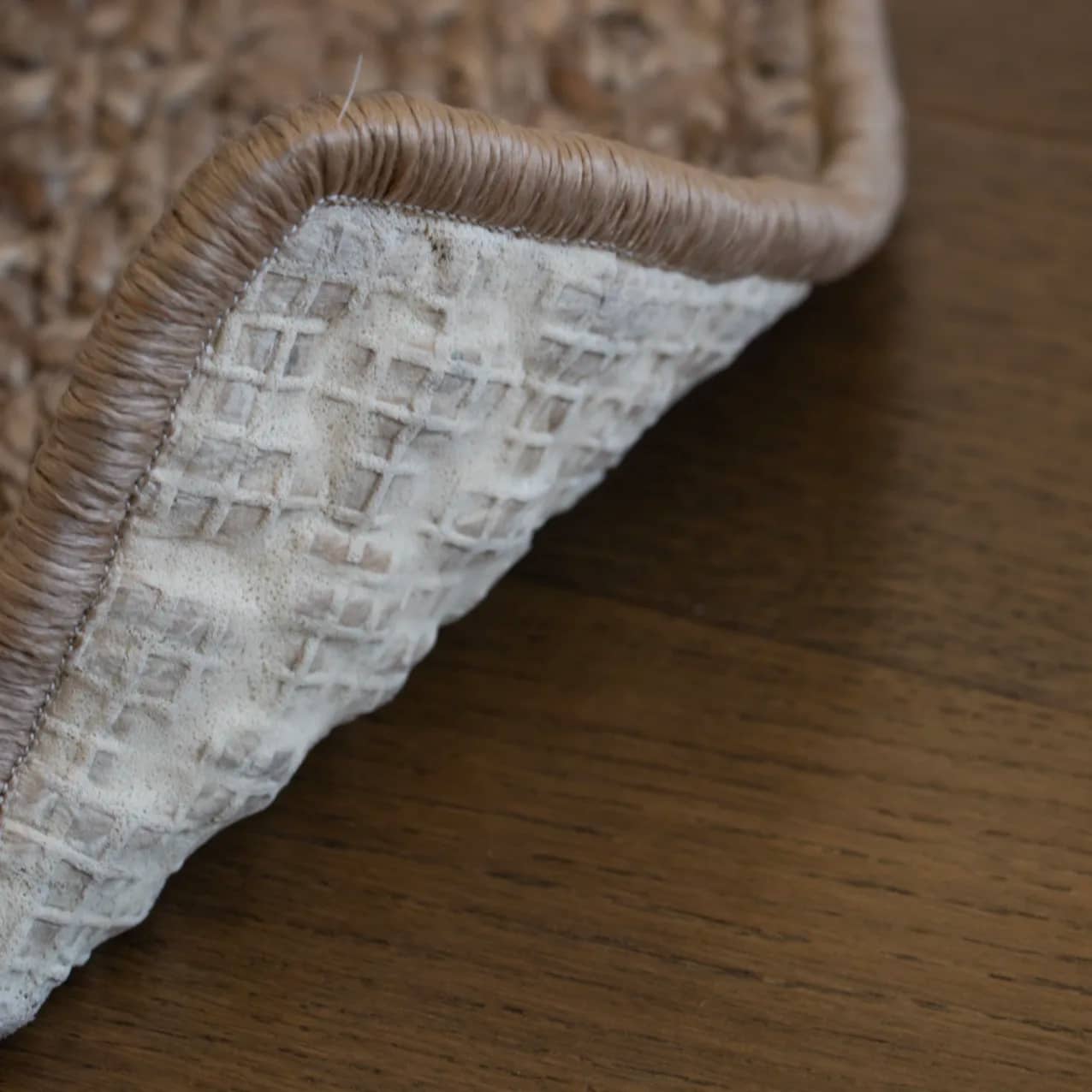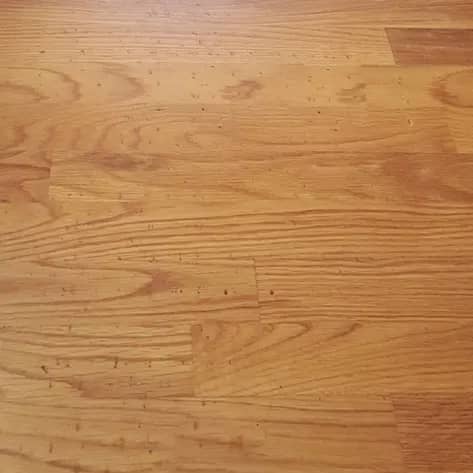How to Remove Latex or Rubber Backing from Your Floor
Latex or rubber rug backings sometime react with certain chemicals found in flooring or cleaning products and end up sticking to the floor. Most often, this happens with hardwood floors but it can happen with other types of flooring such as cement or tile as well.
Below we share information on how to remove the latex if it has stuck to your floor and other tips to prevent it from happening in the first place.

TABLE OF CONTENTS
How to Prevent Latex & Rubber Rug Backing from Sticking to Floors


Latex is a type of backing material used on the underside of a rug or carpet that helps hold the weave and yarns in place. A carpet's backing plays a crucial role in providing durability, stability, and comfort to the finished product. Over time, latex can dry out, break down or stick to the floor.
There are two types of latex: natural and synthetic. Synthetic latex is made from petrochemicals, whereas natural latex is made from the sap of rubber trees. In most case, a chemical adhesive is used to bind the latex backing to the rug fibers.
The best way to avoid having your rug latex sticking to your floor is to always use a rug pad under your latex-backed natural fiber rug. Non-slip rug pads are a safe choice. And if your rug will be anchored by heavy furniture, a felted rug pad is another option that adds cushion and protects the floor.
WOOD FLOORS: Since wood is a natural material that needs to breathe, the Wood Floor Covering Association (WFCA) does not recommend putting anything over your wood floor with a solid rubber or latex backing. Condensation can accumulate under the non-breathable barrier, potentially leading to mildew growth and/or damaging the finish. Look for a thin, non-slip rug pad that has ventilation like an open, waffle-like structure. Or, as mentioned above, if your rug will be anchored by heavy furniture, a felted rug pad adds cushion and protects the floor.
Want to avoid latex all together? Most natural fiber rugs—like sisal, seagrass, and jute—are backed with natural latex. But not EarthSISAL™ - it is backed with felt via a needle-punch process and has no chemical adhesives. Other materials like wool or synthetics are generally backed with a woven material that allows breathability. A rug pad is still recommended to prevent slipping and stabilize the rug structure.
Items You'll Need
Plastic Scraper
Clean Towels or Cloths
Soap (dishwashing soap or Murphy's Oil Soap)
Lubricant or Solvent (if scraping and soap do not do the trick)
Disposable gloves if using solvents
For safety reasons, be sure no one will be walking on the floor during this process.
1. SCRAPE: Use a plastic scraper to remove as much latex as possible without vigorously scraping to avoid gouging your floors.
2. VACUUM: Vacuum or sweep away the debris.
ALWAYS test any solution or solvent in an inconspicuous area of the floor first to be certain it will not affect the finish. Do not proceed until you are certain that the solution or solvent you are considering will not damage your floor.
3. SOAK: A light soak with a warm soap solution may be enough to loosen the latex and rubber debris. Dampen a cloth with soap solution and wipe affected areas. Let sit for 10-15 minutes. Scrub the area with a cloth to loosen the residue. Repeat if necessary. Thoroughly clean and dry the floor when finished to prevent damage. For wood floors, use a hardwood floor cleaning product for the final mop.
If residue is STILL stuck to your floors, try using a lubricant to loosen the latex. And as a last resort, use a solvent to dissolve the residue.
4. LUBRICANT: The principle "like dissolves like" applies here and a thin application of cooking oil—like canola or safflower—may loosen the latex. With a clean cloth, apply a thin layer of oil to the area, avoiding seams or grout lines if possible. Let it rest for 30 minutes to an hour. Use a plastic scraper or rub with a cloth to remove the latex. Repeat as necessary. Thoroughly clean and dry the floor to remove all oily residue.
5. SOLVENT: If the solvent has been deemed safe for your flooring, apply it to the latex rubber to soften or dissolve it. Leave the solvent on for about 15 minutes or according to manufacturer's guidelines. If you leave the solvent on too long, it will begin to evaporate and the latex will harden again. Use a plastic scraper and clean cloths to remove the debris (use disposable gloves to protect your hands).
Solvents include products like GooGone, mineral spirits, or denatured alcohol. Test these products first in an inconspicuous part of the floor to be sure they are safe for your floor. When in doubt, reference your manufacturer's technical information to find a safe solvent for your hard surface.
Please reach out to our customer service team for guidance on choosing the right rug or rug pad for your situation.
LOOKING FOR A LATEX-FREE SISAL RUG?
EarthSISAL™ is the FIRST completely biodegradable sisal in the US.
Instead of chemical adhesives and latex, EarthSISAL™ is backed with a recycled, natural fleece backing adhered to the sisal via a mechanical needle punch process.